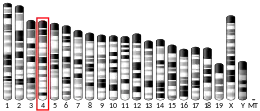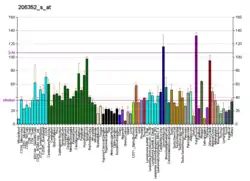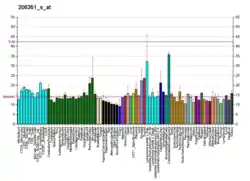| PEX10 | |||||||||||||||||||||||||||||||||||||||||||||||||||
|---|---|---|---|---|---|---|---|---|---|---|---|---|---|---|---|---|---|---|---|---|---|---|---|---|---|---|---|---|---|---|---|---|---|---|---|---|---|---|---|---|---|---|---|---|---|---|---|---|---|---|---|
| Identifiers | |||||||||||||||||||||||||||||||||||||||||||||||||||
| Aliases | PEX10, NALD, PBD6A, PBD6B, RNF69, peroxisomal biogenesis factor 10 | ||||||||||||||||||||||||||||||||||||||||||||||||||
| External IDs | OMIM: 602859 MGI: 2684988 HomoloGene: 5671 GeneCards: PEX10 | ||||||||||||||||||||||||||||||||||||||||||||||||||
| |||||||||||||||||||||||||||||||||||||||||||||||||||
| |||||||||||||||||||||||||||||||||||||||||||||||||||
| |||||||||||||||||||||||||||||||||||||||||||||||||||
| |||||||||||||||||||||||||||||||||||||||||||||||||||
| |||||||||||||||||||||||||||||||||||||||||||||||||||
| Wikidata | |||||||||||||||||||||||||||||||||||||||||||||||||||
| |||||||||||||||||||||||||||||||||||||||||||||||||||
Peroxisome biogenesis factor 10 is a protein that in humans is encoded by the PEX10 gene.[5][6] Alternative splicing results in two transcript variants encoding different isoforms.
Function
Peroxisome biogenesis factor 10 is involved in import of peroxisomal matrix proteins. This protein localizes to the peroxisomal membrane.[6]
Clinical significance
Mutations in this gene result in phenotypes within the Zellweger spectrum of peroxisomal biogenesis disorders, ranging from neonatal adrenoleukodystrophy to Zellweger syndrome.[6]
Interactions
PEX10 has been shown to interact with PEX12[7][8] and PEX19.[9][10]
References
- 1 2 3 GRCh38: Ensembl release 89: ENSG00000157911 - Ensembl, May 2017
- 1 2 3 GRCm38: Ensembl release 89: ENSMUSG00000029047 - Ensembl, May 2017
- ↑ "Human PubMed Reference:". National Center for Biotechnology Information, U.S. National Library of Medicine.
- ↑ "Mouse PubMed Reference:". National Center for Biotechnology Information, U.S. National Library of Medicine.
- ↑ Warren DS, Morrell JC, Moser HW, Valle D, Gould SJ (December 1998). "Identification of PEX10, the gene defective in complementation group 7 of the peroxisome-biogenesis disorders". Am J Hum Genet. 63 (2): 347–59. doi:10.1086/301963. PMC 1377304. PMID 9683594.
- 1 2 3 "Entrez Gene: PEX10 peroxisome biogenesis factor 10".
- ↑ Chang CC, Warren DS, Sacksteder KA, Gould SJ (November 1999). "PEX12 interacts with PEX5 and PEX10 and acts downstream of receptor docking in peroxisomal matrix protein import". J. Cell Biol. 147 (4): 761–74. doi:10.1083/jcb.147.4.761. PMC 2156163. PMID 10562279.
- ↑ Okumoto K, Abe I, Fujiki Y (August 2000). "Molecular anatomy of the peroxin Pex12p: ring finger domain is essential for Pex12p function and interacts with the peroxisome-targeting signal type 1-receptor Pex5p and a ring peroxin, Pex10p". J. Biol. Chem. 275 (33): 25700–10. doi:10.1074/jbc.M003303200. PMID 10837480.
- ↑ Sacksteder KA, Jones JM, South ST, Li X, Liu Y, Gould SJ (March 2000). "PEX19 binds multiple peroxisomal membrane proteins, is predominantly cytoplasmic, and is required for peroxisome membrane synthesis". J. Cell Biol. 148 (5): 931–44. doi:10.1083/jcb.148.5.931. PMC 2174547. PMID 10704444.
- ↑ Fransen M, Wylin T, Brees C, Mannaerts GP, Van Veldhoven PP (July 2001). "Human pex19p binds peroxisomal integral membrane proteins at regions distinct from their sorting sequences". Mol. Cell. Biol. 21 (13): 4413–24. doi:10.1128/MCB.21.13.4413-4424.2001. PMC 87101. PMID 11390669.
Further reading
- Okumoto K, Itoh R, Shimozawa N, et al. (1998). "Mutations in PEX10 is the cause of Zellweger peroxisome deficiency syndrome of complementation group B." Hum. Mol. Genet. 7 (9): 1399–405. doi:10.1093/hmg/7.9.1399. PMID 9700193.
- South ST, Gould SJ (1999). "Peroxisome synthesis in the absence of preexisting peroxisomes". J. Cell Biol. 144 (2): 255–66. doi:10.1083/jcb.144.2.255. PMC 2132891. PMID 9922452.
- Chang CC, Warren DS, Sacksteder KA, Gould SJ (1999). "PEX12 interacts with PEX5 and PEX10 and acts downstream of receptor docking in peroxisomal matrix protein import". J. Cell Biol. 147 (4): 761–74. doi:10.1083/jcb.147.4.761. PMC 2156163. PMID 10562279.
- Sacksteder KA, Jones JM, South ST, et al. (2000). "PEX19 binds multiple peroxisomal membrane proteins, is predominantly cytoplasmic, and is required for peroxisome membrane synthesis". J. Cell Biol. 148 (5): 931–44. doi:10.1083/jcb.148.5.931. PMC 2174547. PMID 10704444.
- Okumoto K, Abe I, Fujiki Y (2000). "Molecular anatomy of the peroxin Pex12p: ring finger domain is essential for Pex12p function and interacts with the peroxisome-targeting signal type 1-receptor Pex5p and a ring peroxin, Pex10p". J. Biol. Chem. 275 (33): 25700–10. doi:10.1074/jbc.M003303200. PMID 10837480.
- Warren DS, Wolfe BD, Gould SJ (2000). "Phenotype-genotype relationships in PEX10-deficient peroxisome biogenesis disorder patients". Hum. Mutat. 15 (6): 509–21. doi:10.1002/1098-1004(200006)15:6<509::AID-HUMU3>3.0.CO;2-#. PMID 10862081. S2CID 196604223.
- Fransen M, Wylin T, Brees C, et al. (2001). "Human pex19p binds peroxisomal integral membrane proteins at regions distinct from their sorting sequences". Mol. Cell. Biol. 21 (13): 4413–24. doi:10.1128/MCB.21.13.4413-4424.2001. PMC 87101. PMID 11390669.
- Fransen M, Brees C, Ghys K, et al. (2002). "Analysis of mammalian peroxin interactions using a non-transcription-based bacterial two-hybrid assay". Mol. Cell. Proteomics. 1 (3): 243–52. doi:10.1074/mcp.M100025-MCP200. PMID 12096124.
- Strausberg RL, Feingold EA, Grouse LH, et al. (2003). "Generation and initial analysis of more than 15,000 full-length human and mouse cDNA sequences". Proc. Natl. Acad. Sci. U.S.A. 99 (26): 16899–903. Bibcode:2002PNAS...9916899M. doi:10.1073/pnas.242603899. PMC 139241. PMID 12477932.
- Ota T, Suzuki Y, Nishikawa T, et al. (2004). "Complete sequencing and characterization of 21,243 full-length human cDNAs". Nat. Genet. 36 (1): 40–5. doi:10.1038/ng1285. PMID 14702039.
- Shimozawa N, Nagase T, Takemoto Y, et al. (2003). "Genetic Heterogeneity in Japanese Patients with Peroxisome Biogenesis Disorders and Evidence for a Founder Haplotype for the Most Common Mutation in PEX10 Gene". Peroxisomal Disorders and Regulation of Genes. Advances in Experimental Medicine and Biology. Vol. 544. p. 71. doi:10.1007/978-1-4419-9072-3_10. ISBN 978-1-4613-4782-8. PMID 14713216.
- Gerhard DS, Wagner L, Feingold EA, et al. (2004). "The status, quality, and expansion of the NIH full-length cDNA project: the Mammalian Gene Collection (MGC)". Genome Res. 14 (10B): 2121–7. doi:10.1101/gr.2596504. PMC 528928. PMID 15489334.
- Rual JF, Venkatesan K, Hao T, et al. (2005). "Towards a proteome-scale map of the human protein-protein interaction network". Nature. 437 (7062): 1173–8. Bibcode:2005Natur.437.1173R. doi:10.1038/nature04209. PMID 16189514. S2CID 4427026.
- Gregory SG, Barlow KF, McLay KE, et al. (2006). "The DNA sequence and biological annotation of human chromosome 1". Nature. 441 (7091): 315–21. Bibcode:2006Natur.441..315G. doi:10.1038/nature04727. PMID 16710414.
External links
- GeneReviews/NCBI/NIH/UW entry on Peroxisome Biogenesis Disorders, Zellweger Syndrome Spectrum
- OMIM entries on Peroxisome Biogenesis Disorders, Zellweger Syndrome Spectrum
This article is issued from Wikipedia. The text is licensed under Creative Commons - Attribution - Sharealike. Additional terms may apply for the media files.





